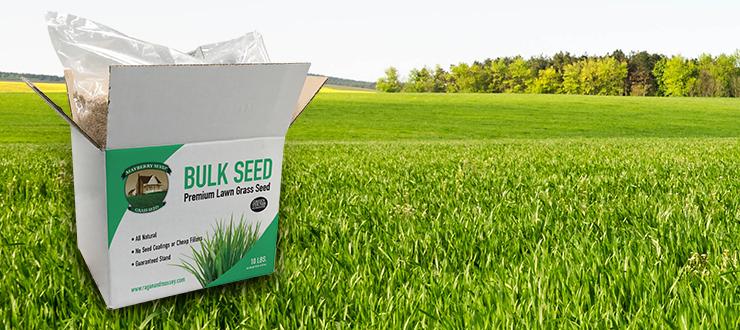
Buying grass seed can be confusing. There are numerous blends for sun or shade and the varieties of seed types seem endless. You want your lawn to be healthy, green and luxuriously thick but you don’t want to waste your money buying the wrong seed. We think our Mayberry Grass Seed is the best you can buy. It’s designed to stand up to the harshest climates and is 99 percent weed free.
We offer six different blends so you can choose exactly what’s best for your lawn.
Mayberry Bahia
Bahia grass is a low-growing perennial grass suitable for planting on sandy soils, shaded lawns or high-traffic areas. And once established, its deep roots make it more resistant to drought and able to withstand summer heat. Bahia grass grows in U.S. Department of Agriculture (USDA) plant hardiness zones 8 through 11. Because it's a warm-season grass, plant bahia grass seeds during the spring or summer for the best germination rates.
Mayberry Bermuda
Bermuda grass is a cold tolerant, warm-season grass that will grow as far north as Virginia. In warmer tropical areas, Bermuda grass will remain green all year long. In other areas that drop below 60 degrees, it will go dormant. Ideal growing regions for Bermuda grass include the USDA zones 7 through 10. The best time to plant Bermuda grass is in the spring once temperatures are consistently warm; this is generally in April or March in warmer regions. Bermuda is not overly picky about soil type and will even tolerate salt spray, making it a good option for coastal regions. Bermuda grass does well in full sun, but it will tolerate some shade.
Mayberry Centipede
Centipede grass, our proprietary blend, is a popular turf grass for lawn in the Southern part of the United States. Centipede grass’ ability to grow in poor soils and its low maintenance properties make it an ideal grass for many homeowners in warmer areas. While centipede grass needs little care, some centipede grass maintenance required, like the occasional fertilizing and deep watering.
Mayberry Fescue
Fescue is a cool season grass, so September through October is the best time to plant a fescue lawn in the South and in the North, plant between March through May. Fescue tolerates cold, heat, drought and shade. It is a great option for improving your lawn’s resilience and durability. Fescue establishes easily from seed and germinates quickly. Its naturally extensive root system reaches two to three feet deep, which contributes to its heat and drought tolerance.
Mayberry Ryegrass
Ryegrass is used in northern climates due to its ability to tolerate cool temperatures. It is typically planted when other, more permanent grasses have died out for the year. Unlike other types of grass which often go dormant at the first frost, ryegrass can stay green and lush during the winter months. Carefully planning your planting area, preparing your soil, and planting the ryegrass seeds can help you create a great crop of ryegrass. In southern climates, ryegrass is typically used to overseed permanent lawns in the fall. Ryegrass is also an inexpensive option for short-term erosion control.
Mayberry Sun and Shade Mix
Our Sun and Shade Mix provides the most versatile lawn in sunny to moderately shady areas. It produces a thick, fine bladed, dark blue green lawn. Very good drought tolerance. Good disease and insect resistance. Contains improved seed varieties that thrive in sun and shade. Seed mix changes for different regions of the country, providing a grass seed specifically formulated for the different climatic zones.
Pick up any of these mixes at a retailer near you or online. Visit our Where To Buy page to get started.
